Communicable Disease DefinitionCommunicable Disease DefinitionA sickness that may spread from one person or animal to another, or from a surface to a person, is referred to as a "communicable disease". These include the flu and colds. Pathogens like viruses, bacteria, and fungus bring on these illnesses. Airborne, body fluid-contact, insect bites, contaminated surfaces, water, food, and afflicted objects are some of the ways that communicable illnesses can be spread. What are Communicable Diseases?Any disease that spreads from one person or animal to another is considered a communicable disease. Occasionally, the terms "infectious" or "transmissible" are used to describe communicable illnesses. 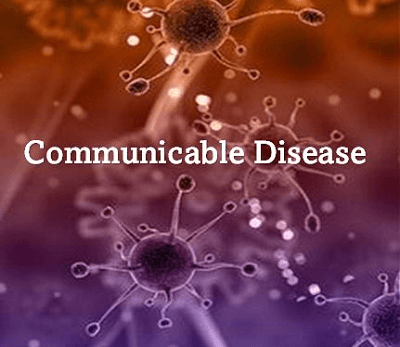
Pathogens, such as bacteria, viruses, fungi, and protozoa, bring on communicable diseases. Typical Methods That Spread Communicable Diseases
Germs can spread from the nose, mouth, or eyes to the hands and then to other family members or friends by sneezing, coughing, or wiping the eyes. One of the diseases that may be prevented by merely washing your hands is the common cold and eye infections.
Generally, sick food preparer who neglect to wash their hands after using the bathroom spreads germs from dirty hands to food. Those who ingest the meal subsequently contract the bacteria. Washing your hands after using the restroom and preparing meals is an easy way to avoid contracting this disease. 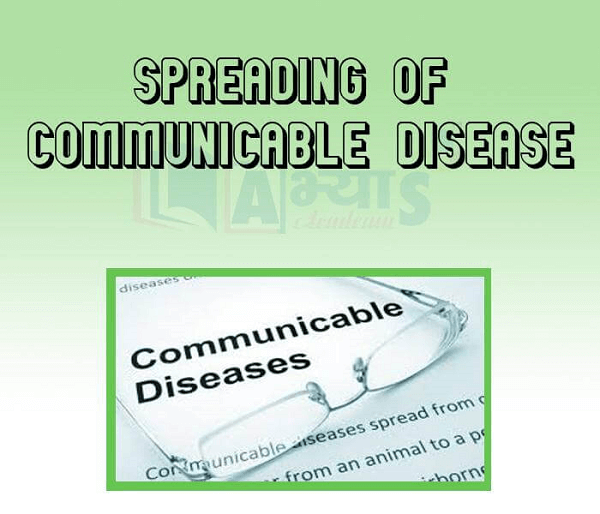
As food is prepared, hands can become contaminated with germs from raw foods like chicken. In turn, other raw foods like salad are contaminated by the bacteria on the hands. While the original germs in the raw food are eliminated by cooking it, the salad is still infected.
When a child has diarrhea, the parent's hands come into contact with the germs during the diaper change. The bacteria that cause diarrhea are then spread to other people if the parent doesn't wash their hands right away.
Please wash your hands after stroking animals or interacting with anything they have touched. Types of Communicable Diseases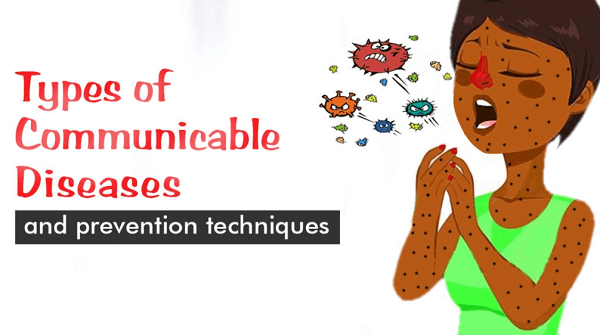
Viruses, bacteria, fungus, and protozoa are the four primary categories of pathogens that cause infection: VirusesSmall infections called viruses carry genetic material. They lack the intricate structure of a cell, in contrast to other diseases. They must go inside other living things' cells to reproduce. They enter the cell and duplicate themselves using the equipment within. BacteriaBacteria are single-celled, tiny creatures. They may be discovered nearly everywhere in the world, even inside the human body. Many bacteria are beneficial, and some even help the body to maintain itself. Bacteria, however, can also result in illnesses that harm the body. FungiFungi are a type of organism that includes yeasts, molds, and mushrooms. There are numerous fungi, numbering in the millions. Yet, only around 300 of these are dangerous. Anything in the body might develop a fungus infection. They often impact the skin and mucous membranes, though. ProtozoaMicroscopic creatures known as protozoa generally only have one cell. Some protozoa are parasitic, meaning they reside on or within another creature and draw nutrition for survival from that organism. Parasitic protozoa can bring on many illnesses. Precautions to Prevent the Spreading of the Disease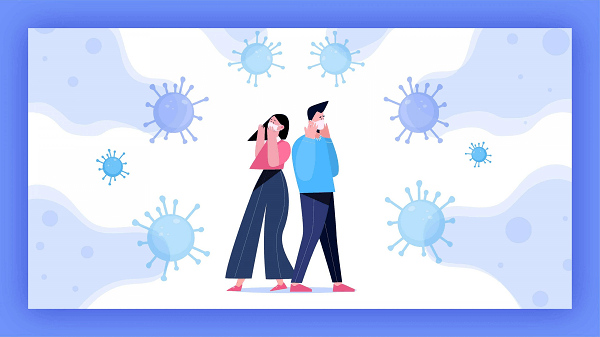
A person can take precautions to lessen their risk of catching and spreading disease-causing microorganisms. They include getting all necessary immunizations, regularly washing your hands, and maintaining proper hygiene at home. 1. Wash your hands often This is crucial prior to and following food preparation, during mealtime, and after visiting the restroom. 2. Vaccinate yourself Immunization can significantly lower your risk of developing a variety of diseases. Continually receive the appropriate vaccines. 3. Make wise use of antibiotics by just taking them as directed Take the whole course of your antibiotic, even if you start to feel better before you have finished the drug, unless otherwise instructed or unless you are allergic to them. 4. Stay at home if you have signs and symptoms of an infection Refrain from going to work or class if you are exhibiting symptoms of an infection, such as vomiting, diarrhea, or a fever. 5. Be smart about food preparation Use good judgment when preparing food by tidying worktops and other kitchen surfaces. Also, swiftly put leftovers in the fridge. Leave cooked items out at room temperature for a short time. 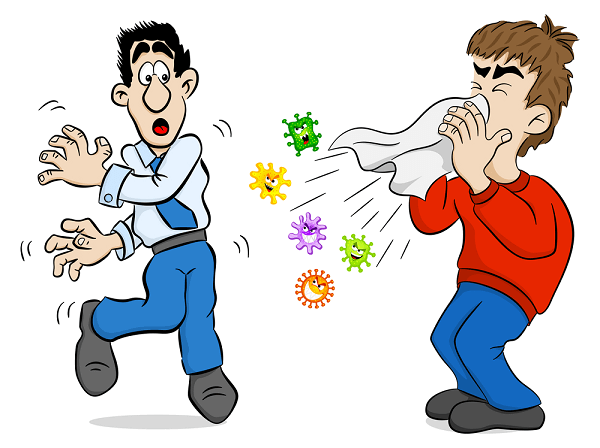
6. Disinfect the 'hot zones' in your residence Clean up the "hot zones" in your home, which include the kitchen and bathroom. These two areas are known to contain high levels of germs and other infectious agents. 7. Use condoms to engage in safer sex Get checked for sexually transmitted diseases (STDs), get your partner to get tested, or refrain from having any sexual activity. 8. Avoid sharing personal items Utilize your personal toothbrush, comb, and razor. Shared drinking or eating utensils should not be used. 9. Travel wisely If you're sick, avoid flying. You could spread an infection to other airline fliers since so many people are crammed into a tight space. Also, the journey won't be cozy. See your doctor about any additional vaccines you might require based on where your travels will take you. Communicable Disease Causes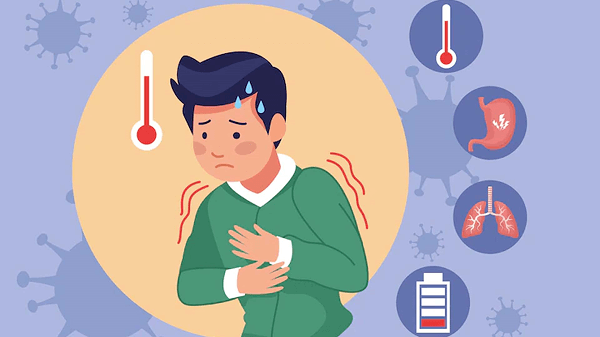
A person may get a communicable disease after becoming infected by the virus. This might happen as a result of the following:
Common Communicable DiseaseCommon bacterial, fungal, viral, and protozoal Diseases include: RhinovirusesThe most frequent Source of the common cold is a family of viruses known as rhinoviruses. A cold may cause the following symptoms:
By breathing in infected droplets from another person's cough or sneeze, one might get a rhinovirus. In a manner similar to this, individuals who touch their nose, eyes, or mouth after contacting objects or surfaces that have come into contact with the virus are dispersing rhinoviruses. CoronavirusesA large group of viruses known as coronaviruses attack the respiratory systemReliable Source. The SARS-CoV-2 virus belongs to this family. While some coronaviruses might result in milder effects like the common cold and flu, others can have more serious consequences. InfluenzaInfections caused by influenza viruses target the respiratory system. Some potential signs Many reliable sources are:
In the same manner that a person may get rhinoviruses, they can also contract influenza viruses. HIVHIV targets the host's immune system. They thus become more vulnerable to contracting different infections and diseases. A person can get HIV by coming into touch with blood or other body fluids. HIV symptoms may appear stage-by-stage and gradually. The following symptoms may be present:
Being tested for HIV is the only method to know for sure if one is infected. Despite the fact that there is currently no treatment for HIV, some drugs can help keep the infection under control or even render it undetectable. AIDS can develop from HIV if such therapy is not received. A person can avoid getting HIV by taking additional drugs. Individuals who are at high risk for HIV and those who think they may have been exposed to it should discuss these choices with their main healthcare provider. Escherichia coli and salmonellaNontyphoidal Two distinct bacterial species that can infect the digestive tract are salmonella and escherichia coli (E. coli). Salmonella typhi, another kind of salmonella, can also cause typhoid. The most common ways they are spread are through contaminated food, such as raw meat and eggs, unwashed fruits and vegetables, and polluted water sources. Moreover, human-to-human contact and exposure to live animals, such as chickens, pose risks for salmonella transmission. The following are some signs of these infections:
TuberculosisA bacterial illness known as tuberculosis (TB) mostly targets the lungs. It might lead to any of the following signs:
Breathing in microscopic droplets or "aerosols" from an infected person's cough or sneeze might become tuberculosis (TB). RingwormA fungus frequently causes the skin ailment ringworm. A rash with a ring-like appearance is the defining sign of ringworm. It could itch, be dry, or be scaly.
Ringworm may spread to other body areas if it is not treated. Athlete's foot The skin on the feet might have athlete's foot, a common fungal infection. The white spots between the toes that it often generates are painful or uncomfortable. Direct contact with an individual who has an athlete's foot or surfaces that have been exposed to the fungus can result in the spread of the disease. Athletes' feet, for instance, can be acquired by barefoot walking in showers, swimming pools, and locker rooms. PlasmodiumMalaria is a tropical illness brought on by the protozoa of the Plasmodium genus. Most frequently, mosquito bites are the means of transmission for the parasite. Malaria symptoms include headaches, nausea, vomiting, diarrhea, and muscular discomfort. Malaria poses a serious threat to health without effective care. Vaccination programs also achieve the prevention of malaria deaths. Lyme DiseaseBlack-legged ticks can infect humans with Lyme disease, a potentially dangerous illness. In the US, it is the illness that is transferred most frequently by carriers. Most instances of Lyme disease are brought on by the bacterium Borrelia burgdorferi. The illness might, however, also be brought on by the germs Borrelia mayonii. The signs and symptoms of Lyme disease include headache, exhaustion, fever, and skin rash. The heart, joints, and nervous system can all be affected by Lyme disease if it is left untreated. Symptoms of Communicable Diseases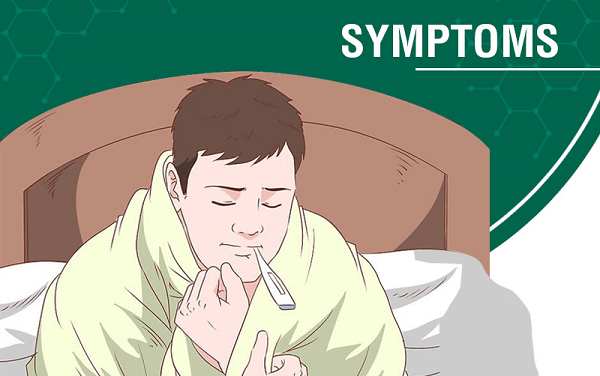
Treatment for Communicable Diseases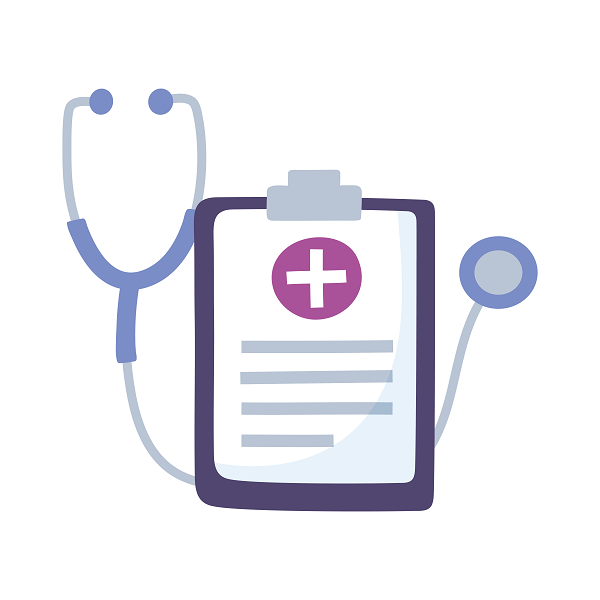
Some communicable illnesses have minor symptoms that go away on their own. Others may result in serious symptoms or consequences that might be fatal. Based on the illness process and clinical presentation, patients need a variety of treatments: Viral InfectionsFor avoiding certain viral diseases, vaccinations are a very successful strategy. Vaccines come in a wide variety of forms. A virus-like substance is given to the patient when they get a vaccination. In response, the immune system creates antibodies that are able to eliminate the virus when it is active in the future. In order to keep a virus under control, if a person currently has one, antiviral drugs may be necessary. Bacterial InfectionsDepending on the bacteria involved, infections might be mild or deadly. In order to control a bacterial illness, an individual may need to take a course of antibiotics. For the immune system to be able to fight off infections, these medications can help destroy them or slow down their growth. Antibiotic resistance is growing among many bacteria, which is dangerous for human health. Antibiotics should never be used without a doctor's prescription. Fungal InfectionsAntifungal drugs prescribed by a doctor and intravenous therapy in rare circumstances may be needed for a severe or persistent fungal infection. Nevertheless, many minor infections, like ringworm and athlete's foot, may be treated with over-the-counter topical ointments. 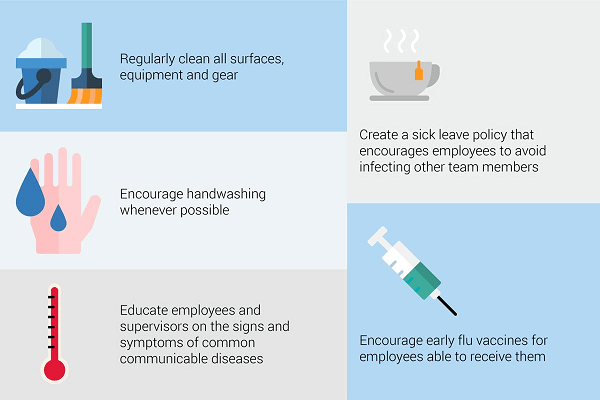
ConclusionAny illness that may spread from person to person is considered communicable. The microorganisms that cause these illnesses can be transferred in a number of ways, including through the air, by contact with infected objects or surfaces, and through bites from both animals and insects. Mild symptoms that go away on their own are common in many communicable illnesses. Others need to be treated in order to avoid getting worse.
Next TopicCommunication Skills Definition
|
 For Videos Join Our Youtube Channel: Join Now
For Videos Join Our Youtube Channel: Join Now
Feedback
- Send your Feedback to [email protected]
Help Others, Please Share










